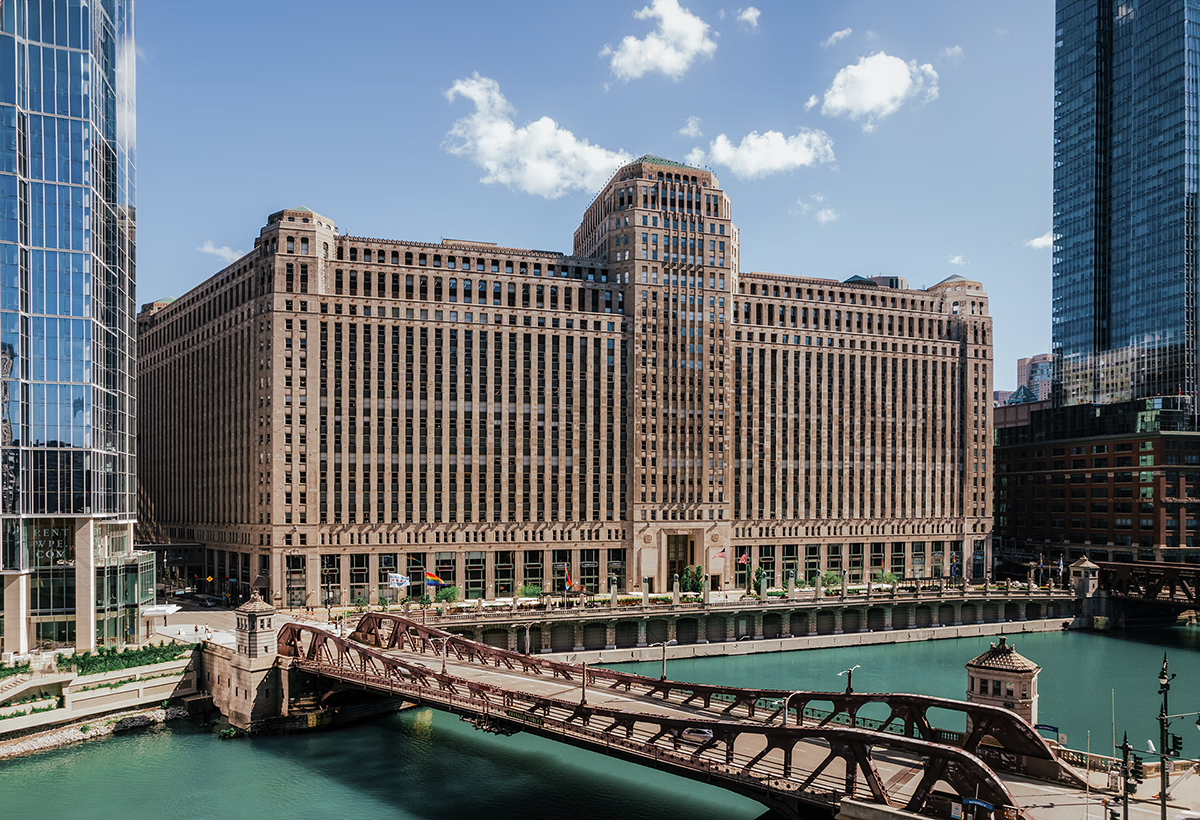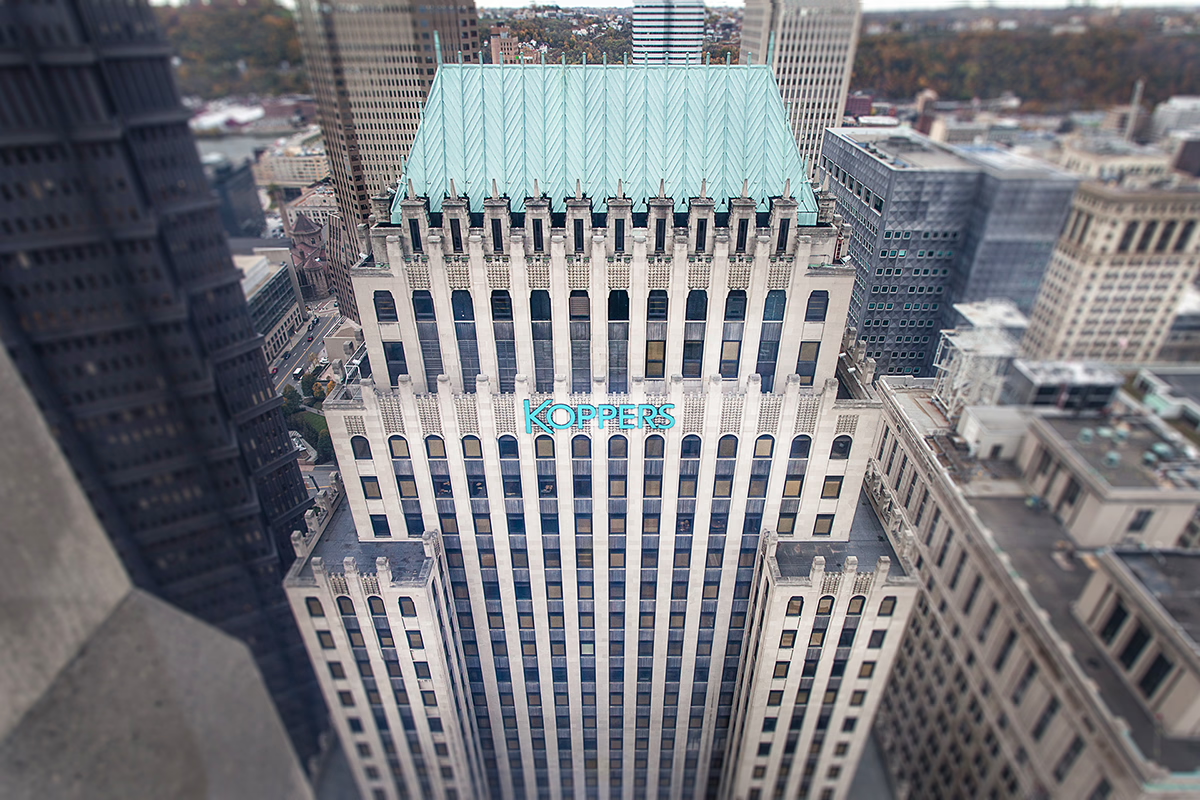Merchandise Mart vs Koppers Tower


Comparing the Merchandise Mart and the Koppers Tower is an interesting exercise, because even though they are located in different cities (Chicago, IL and Pittsburgh, PA), both were designed by Graham, Anderson, Probst & White and finished within just one year apart. This gives us the chance to see how the same architect's ideas were expressed in different urban contexts almost simultaneously.
Height & Size
The Koppers Tower is clearly the larger tower of the two, both in terms of height and number of floors. It rises to 476ft (145m) with 34 floors above ground, while the Merchandise Mart reaches 341ft (104m) with 25 floors above ground.
Of course, each project may have faced different briefs or regulatory constraints, which we don't really know about and could also explain the outcome.
Architectural Style
Both the Merchandise Mart and the Koppers Tower were designed in line with the aesthetic conventions of the Art Deco style.
At the time, this style was at the height of its popularity. So Graham, Anderson, Probst & White followed what was in many ways expected at the time, producing designs that fit comfortably within contemporary architectural norms rather, than breaking with convention.
Uses
Both the Merchandise Mart and the Koppers Tower were designed to serve as commercial towers, and that has remained their main use since their completion, serving similar roles in the urban fabric.
Structure & Facade
Both the Merchandise Mart and the Koppers Tower rely on a Frame structural system.
A frame structure uses a grid of columns and beams to carry the building's loads. This frees the walls from structural duties, allowing for flexible floor plans and larger windows.
They also employ the same type of facade, a Masonry facade.
A masonry facade gives the building a heavier, more traditional appearance. It often conceals a frame structure behind it, creating the look of solid walls without carrying the main loads.
| Merchandise Mart | Koppers Tower | |
|---|---|---|
| Graham, Anderson, Probst & White | Architect | Graham, Anderson, Probst & White |
| 1928 | Construction Started | 1927 |
| 1930 | Year Completed | 1929 |
| Art Deco | Architectural Style | Art Deco |
| Commercial | Current Use | Commercial |
| 25 | Floors Above Ground | 34 |
| 104 m | Height (m) | 145 m |
| 372,000 m² | Usable Area (m²) | 26,985 m² |
| Frame | Structure Type | Frame |
| Steel | Vertical Structure Material | Steel |
| Concrete | Horizontal Structure Material | Concrete |
| No | Facade Structural? | No |
| John W. Griffiths & Sons | Main Contractor | Mellon Stuart |
| Marshall Field & Co | Developer | Andrew W. Mellon |
| IL | State | PA |
| Chicago | City | Pittsburgh |
| 222 Merchandise Mart Plaza | Address | 436 Seventh Avenue |